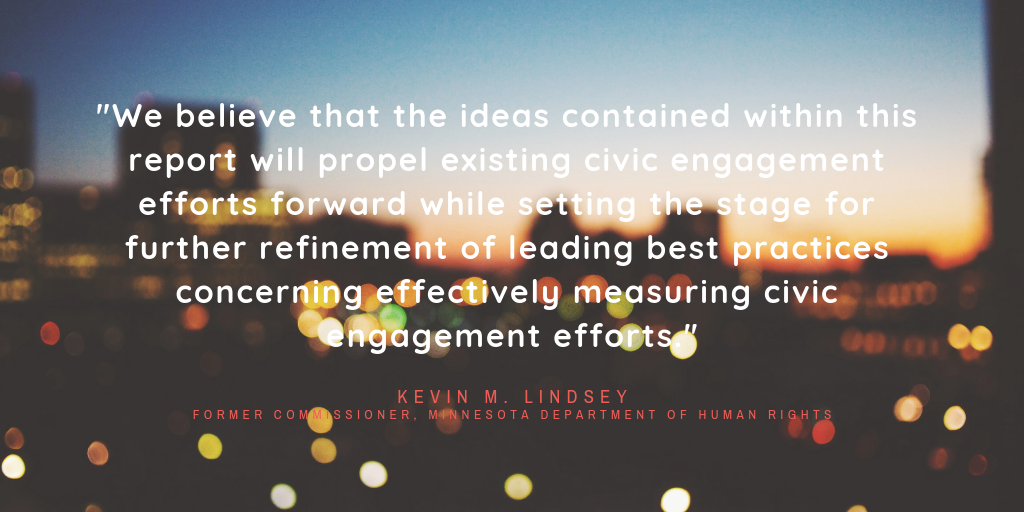
Do you remember the last time you engaged with a Minnesota state agency to give input on a public policy decision? Did you feel heard?
An effort by the Minnesota Department of Human Rights (MDHR) aims to make quality civic engagement more common—and more meaningful. The Improve Group was excited to play an important role in this effort by helping to develop an evaluation framework to measure civic engagement.
While it can sound like a dry topic, civic engagement with state agencies can play a key role in equity, with many of the most underreached populations feeling increasingly mistrusting of the government. Building bridges for communities to have a say in public policy can help Minnesota be a better place to live for everyone. However, without evaluation, it will be difficult to know if any bridge is being built at all.
“Civic engagement work occurs in contexts that are fluid and ever-changing,” we write in the report. “Without a way to assess our successes and challenges, all we have to guide us is our gut instinct, leaving the door wide open for assumptions to go unchecked and increasing the likelihood of negative outcomes. Therefore, evaluating civic engagement is an essential component to creating good engagement practices.”

To create a guide for all Minnesota agencies, we partnered with the Department of Transportation (MnDOT), the Environmental Quality Board (EQB), and the Olmstead Implementation Office (OIO) on pilot evaluation efforts. Talk about a wide array of work!
Interesting indicators for civic engagement emerged. For example, MnDOT’s Rethinking I-94 team, which wants to hear from more underrepresented voices, measured the convenience of its meetings by the percent of events located within an eighth of a mile of a transit stop. To measure an agency’s awareness of barriers people with disabilities face to civic engagement, OIO considered how many interactions staff have with leaders of the disability community.
Overall guidance also emerged and is documented in “A Guide to Evaluate Civic Engagement.” The guide is available online—check it out! The guide offers tips and lessons for how to design a civic engagement evaluation and what is important to keep in mind. We encourage agencies to utilize the development of a Theory of Change—an often-overlooked tool that articulates an agency’s efforts and what it hopes to achieve—as a first step. We also underscore that civic engagement evaluation is not linear, but rather a continuous cycle of data collection, improvement, and reporting.
As part of the guide, then-MDHR Commissioner Kevin Lindsey shared the impact he thinks it will have.
“We believe that the ideas contained within this report will propel existing civic engagement efforts forward while setting the stage for further refinement of leading best practices concerning effectively measuring civic engagement efforts,” he said.
We, too, are excited for how this guide can support state agencies’ improved efforts to reach historically underrepresented communities. Read the full guide to evaluating civic engagement here.
